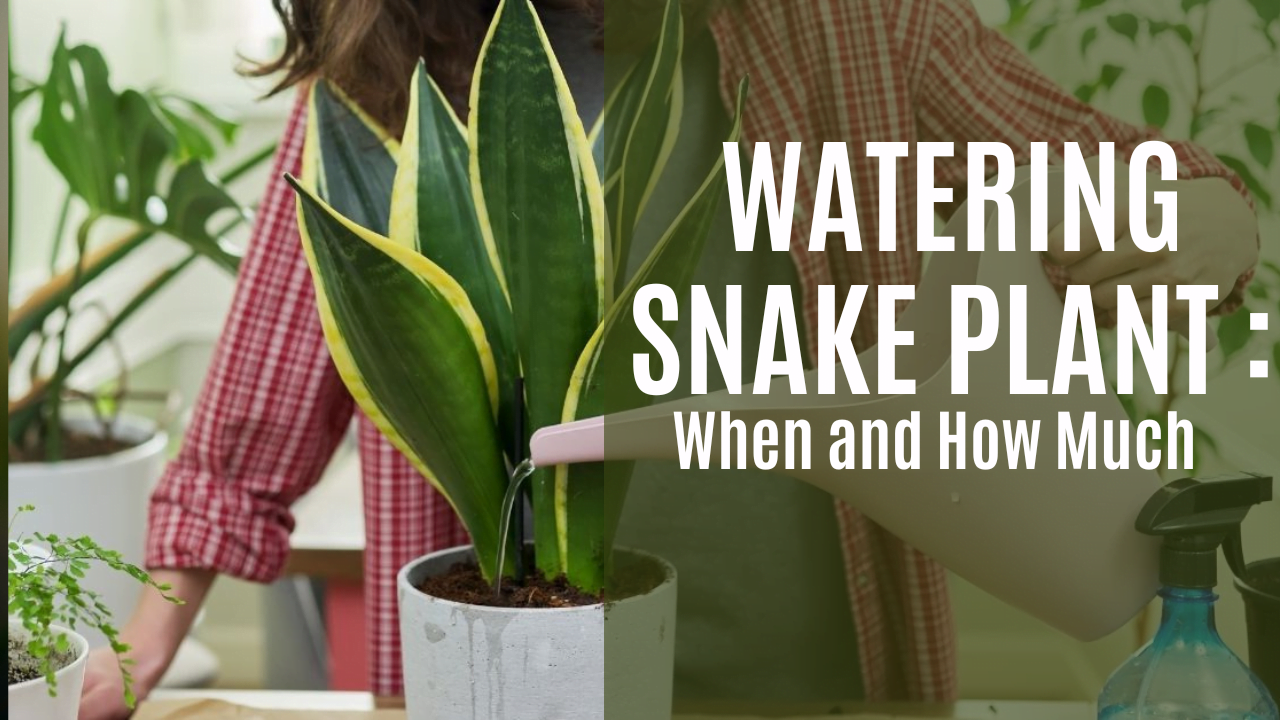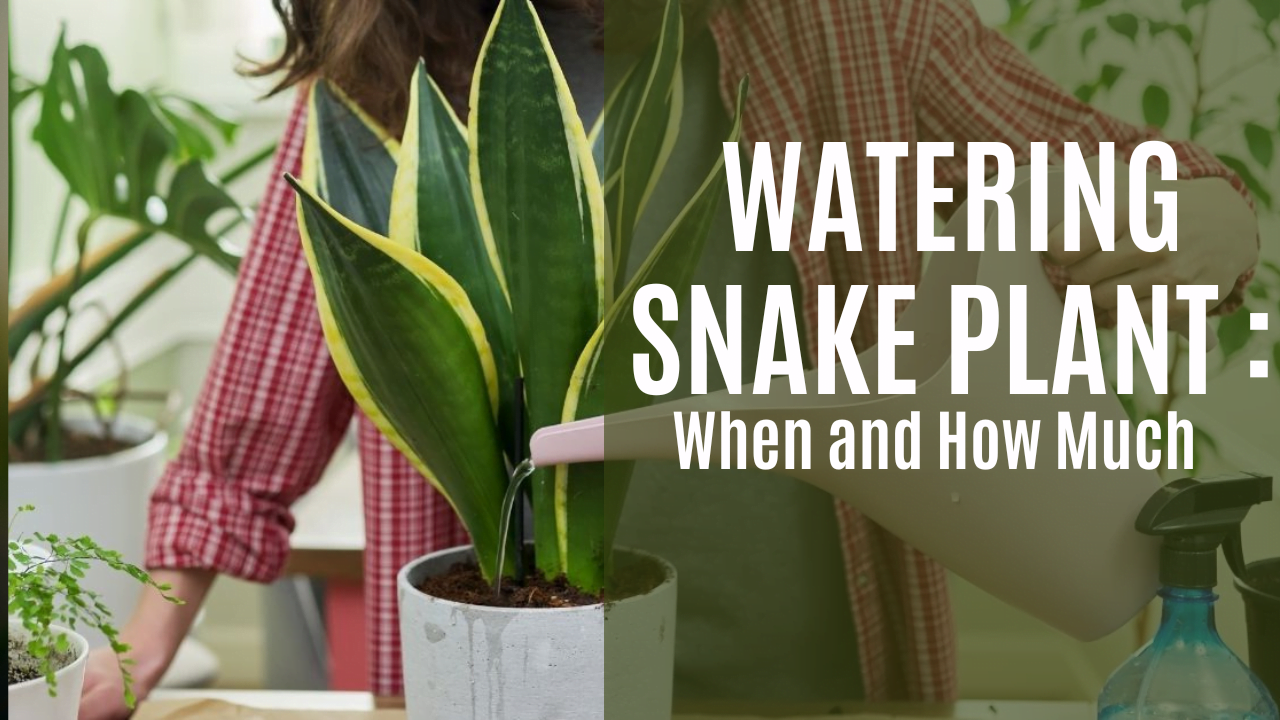The Ideal Watering Schedule for Snake Plants is a crucial aspect of their care, ensuring they thrive and remain healthy. These resilient plants, known for their striking foliage, are surprisingly adaptable to a range of environments, but their water needs require a bit more attention.
Understanding the unique water storage capabilities of snake plants and the factors influencing their watering frequency, such as pot size, soil type, and environmental conditions, is essential for optimal growth.
This guide will delve into the intricacies of creating the perfect watering schedule for your snake plant, considering its growth stage and the season. We’ll explore the telltale signs of overwatering and underwatering, empowering you to identify and address these issues promptly.
Moreover, we’ll examine various watering techniques and tools, providing practical tips for ensuring your snake plant receives the ideal amount of moisture.
Understanding Snake Plant Watering Needs: The Ideal Watering Schedule For Snake Plants
Snake plants, also known as Sansevieria, are renowned for their resilience and ability to thrive in a variety of conditions. However, one aspect of their care that often causes confusion is watering. Understanding the unique water storage capabilities of snake plants and the factors that influence their watering needs is crucial for maintaining their health and vigor.
Factors Influencing Watering Frequency
The frequency of watering snake plants is influenced by a combination of factors, including the size of the pot, the type of soil used, and the environmental conditions in which they are grown.
- Pot Size:Larger pots hold more soil, which in turn can retain more moisture. Snake plants in larger pots will generally require watering less frequently than those in smaller pots.
- Soil Type:Well-draining soil is essential for snake plants, as they are susceptible to root rot in overly wet conditions. Soil mixes that contain ingredients like perlite or pumice promote drainage and aeration, reducing the risk of overwatering.
- Environmental Conditions:Temperature, humidity, and light levels all play a role in how quickly soil dries out. Snake plants in warm, humid environments may require more frequent watering than those in cooler, drier conditions. Similarly, plants receiving bright, indirect light will generally need watering more often than those in low-light conditions.
Assessing Soil Moisture Levels
The best way to determine when to water a snake plant is to assess the moisture level of the soil. Avoid watering based solely on a predetermined schedule, as this can lead to overwatering.
Just like snake plants thrive on infrequent watering, bonsai trees require a careful balance of moisture and drainage. The right pot, as explained in How to Choose the Right Bonsai Pot for Balanced Growth , plays a crucial role in achieving this balance.
By selecting a pot with appropriate drainage and material, you can create an ideal environment for your bonsai, just as a well-draining soil and infrequent watering are essential for a healthy snake plant.
- Finger Test:Insert your finger about an inch into the soil. If it feels dry to the touch, it’s time to water. If it feels slightly damp, wait a few days before watering again.
- Weight Check:A dry pot will feel significantly lighter than a wet one. Lift the pot and compare its weight to what you remember it feeling like when it was last watered. This can be a good indicator of whether the soil is dry enough to warrant watering.
- Moisture Meter:While not essential, a moisture meter can provide a more precise measurement of soil moisture levels. However, it’s important to use it in conjunction with other methods to ensure accuracy.
Additional Tips for Optimal Growth
While the general watering schedule Artikeld above provides a solid foundation, tailoring it to specific snake plant varieties and environmental factors can optimize growth. Furthermore, understanding the importance of drainage and fertilization are crucial for promoting healthy development.
Adjusting the Watering Schedule for Different Varieties
The frequency of watering can vary depending on the specific snake plant variety. Some varieties, like the Sansevieria Laurentii, are more tolerant of drought and require less frequent watering than others, such as the Sansevieria Cylindrica. Observe your plant’s leaves for signs of dryness or wilting, which can indicate the need for watering.
Just like the size of a bonsai pot significantly impacts the growth of the miniature tree, as explained in this insightful article on Bonsai Pot Sizes: Why It Matters for Tree Growth , the size of the pot your snake plant is in can affect its watering needs.
A smaller pot will dry out faster, requiring more frequent watering compared to a larger pot, which holds more moisture and allows the soil to stay damp for longer periods.
The Importance of Drainage and Well-Draining Soil, The Ideal Watering Schedule for Snake Plants
Snake plants are susceptible to root rot if they are overwatered or planted in poorly draining soil. To prevent this, ensure that the pot has drainage holes and use a well-draining potting mix that allows excess water to escape.
A mixture of potting soil, perlite, and sand can provide excellent drainage.
Fertilizing Snake Plants
Fertilizing your snake plant can encourage growth and even stimulate blooming. However, excessive fertilization can harm the plant. Use a balanced liquid fertilizer diluted to half strength during the growing season (spring and summer). Avoid fertilizing during the dormant period (fall and winter).
Wrap-Up

By understanding the nuances of snake plant watering, you can provide your plant with the ideal conditions for thriving. From establishing a consistent watering schedule to recognizing the signs of overwatering and underwatering, this guide equips you with the knowledge to keep your snake plant flourishing.
Remember, consistent care and attention to its needs will reward you with a vibrant, healthy plant that adds a touch of natural beauty to your space.
Popular Questions
How often should I water my snake plant during the winter?
During winter, snake plants enter a dormant period, requiring less water. Water them only when the soil is completely dry, which might be every 4-6 weeks.
What type of water is best for snake plants?
While tap water is generally fine, filtered or distilled water is preferred, as it contains fewer minerals that can build up in the soil.
Can I use ice cubes to water my snake plant?
While ice cubes can provide a slow release of water, it’s not the most effective method. The cold temperature can shock the roots, and the ice may not reach all areas of the soil.
Should I use a humidifier for my snake plant?
Snake plants don’t require high humidity levels. However, if your home is extremely dry, using a humidifier can help maintain a slightly more humid environment.
